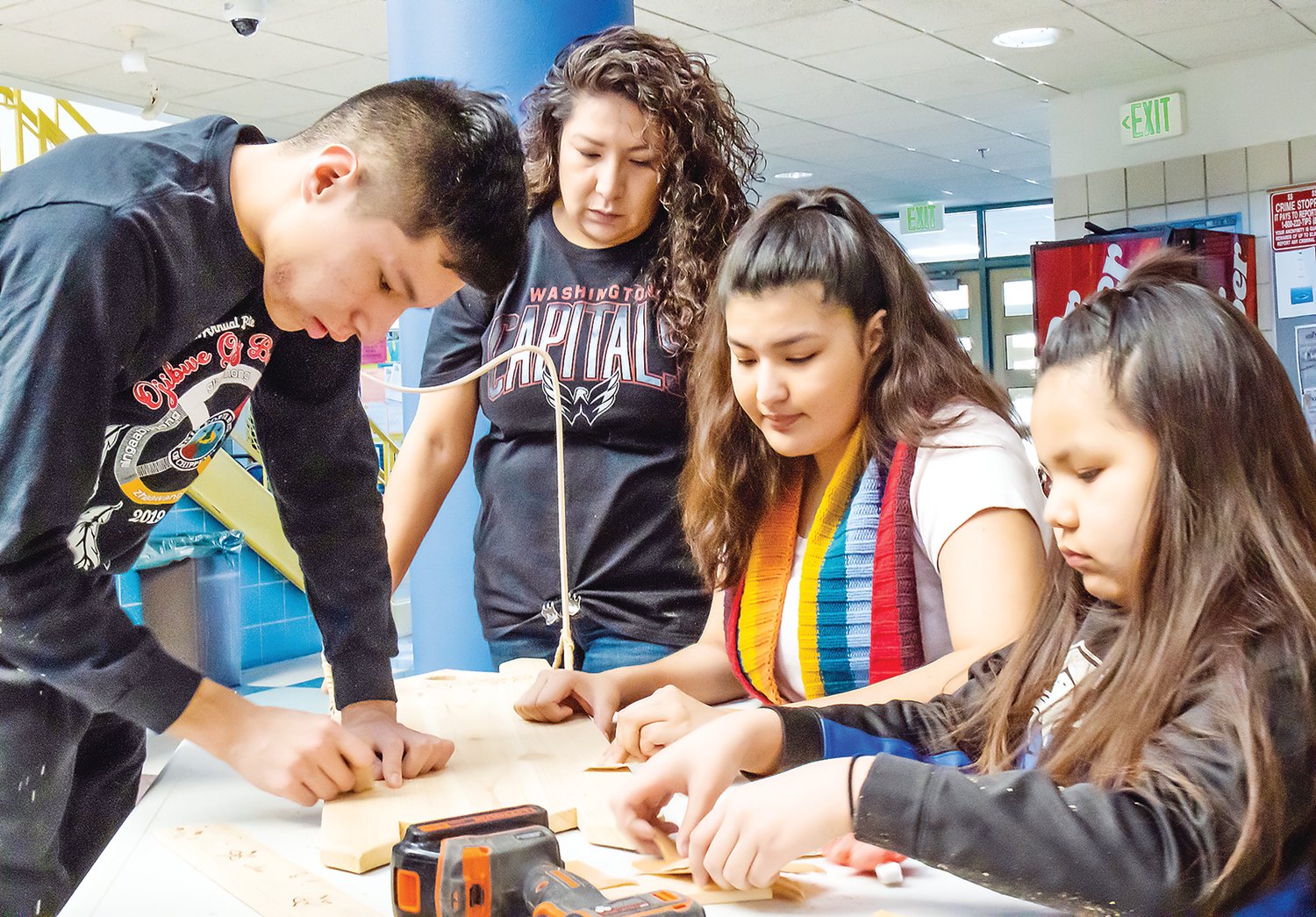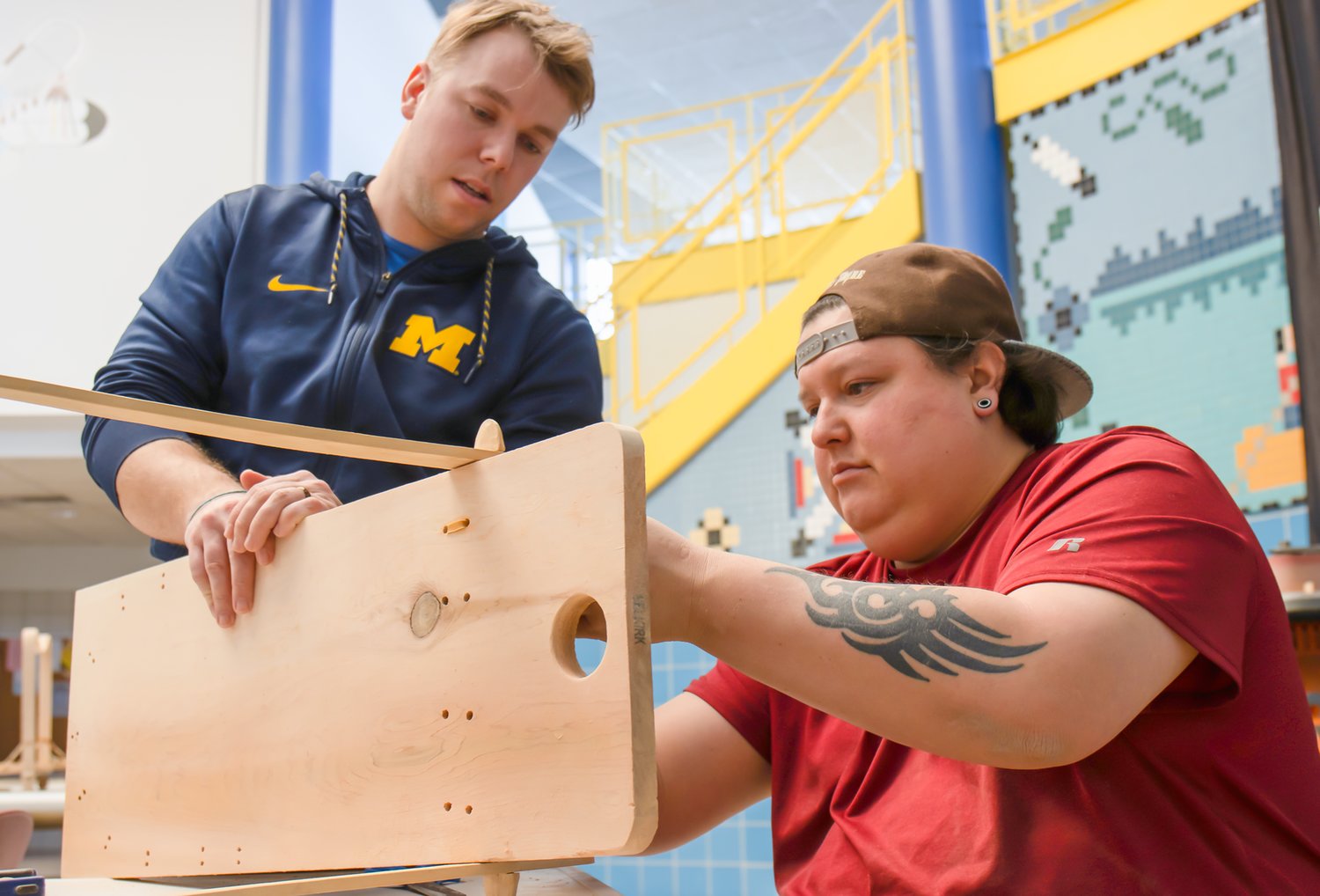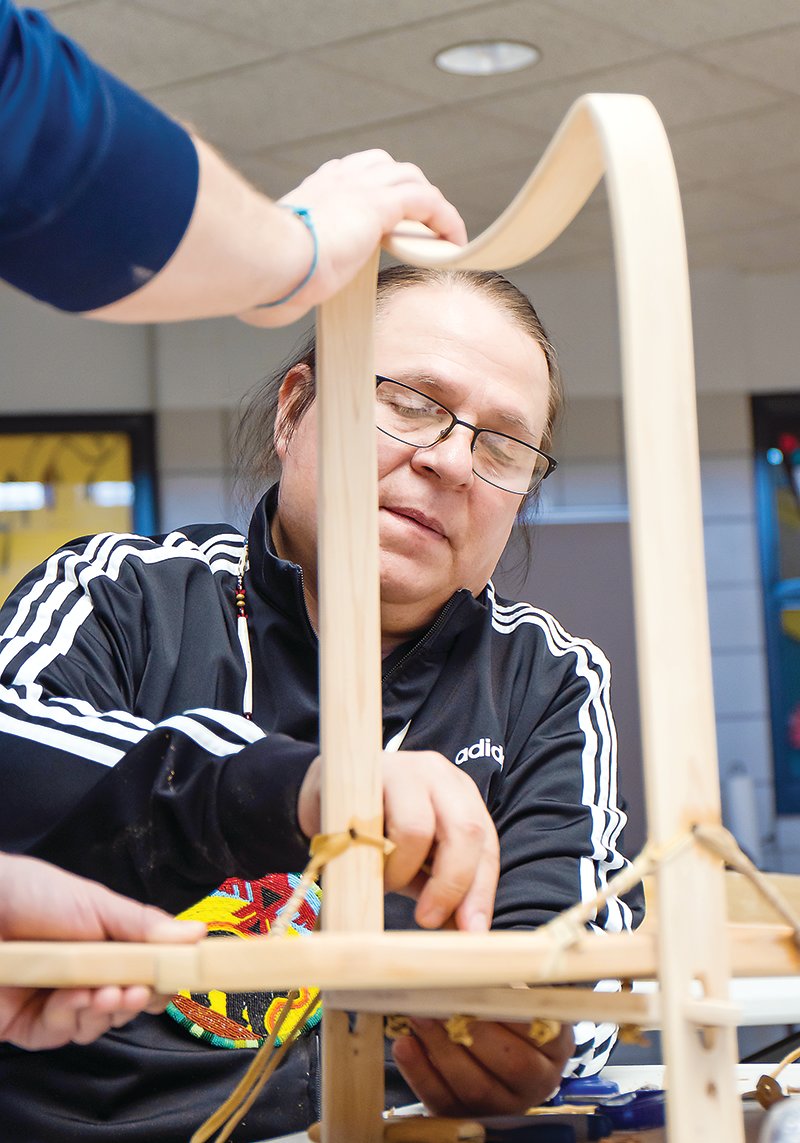Support the Timberjay by making a donation.
Crafting cradleboards
Workshop is mix of craft, tradition, and teaching
NETT LAKE- The men were the first to arrive on the final day of a recent three-day cradleboard workshop at Nett Lake School, and in light of Ojibwe tradition it was wholly appropriate.“The …
This item is available in full to subscribers.
Attention subscribers
To continue reading, you will need to either log in to your subscriber account, or purchase a new subscription.
If you are a current print subscriber, you can set up a free website account and connect your subscription to it by clicking here.
If you are a digital subscriber with an active, online-only subscription then you already have an account here. Just reset your password if you've not yet logged in to your account on this new site.
Otherwise, click here to view your options for subscribing.
Please log in to continue |
Crafting cradleboards
Workshop is mix of craft, tradition, and teaching
NETT LAKE- The men were the first to arrive on the final day of a recent three-day cradleboard workshop at Nett Lake School, and in light of Ojibwe tradition it was wholly appropriate.
“The woodworking was actually done by the men,” said workshop leader Wayne Valliere, a Lac Du Flambeau Ojibwe from Wisconsin. “The expectant father and grandfather went out and did this heavier work.”
Nicholas deShaw came from St. Paul to learn how to make a cradleboard.
“I’m here because my wife and I are expecting our first baby in April,” he said. “I’m trying to learn these traditions to pass on to him and try to raise him as best I can in our Anishinaabe traditions.”
Darren Landgren is digital communications director for KBFT, the Bois Forte Tribal Community Radio station which sponsored the workshop. He was making a cradleboard for the station’s resource library.
“We want to capture as much history and knowledge as we can to preserve it so that if people have an interest they can come learn about it here,” Landgren said.
Landgren and deShaw exchanged thoughts about who was traditionally responsible for making a cradleboard.
“This is traditionally a men’s craft, but there are a lot of women here, too,” deShaw said.
“I thought it was a women’s craft,” Landgren replied.
“What I’ve heard is that the father would make this,” deShaw said. “In modern times it’s kind of whoever can do it.”
Valliere said cradleboard-making is typically a joint venture, with the father responsible for woodworking and the mother responsible for making the lining, ties, beading, and traditional moss-filled pillow.
“There are different customs from Ojibwe group to Ojibwe group,” Valliere said. “In Minnesota, they would not even start the cradleboard until after the baby was born. The mortality rate was so high amongst native people that the cradleboard could be an awful reminder to mom and dad of what could have been and could be very emotionally damaging. That’s why they waited.”
In Wisconsin, boards are started when a mother learns she is expecting.
“The Ojibwe people in Wisconsin believe we are sending these vibes to the Great Spirit to assure that the baby is born,” Valliere said. “That is our custom. Which one is right? They’re both right. It’s what our grandparents did.”
To view a cradleboard as simply a means to carry a child is to miss most of its purpose and meaning, Valliere said.
“It’s tradition, it’s culture,” he said. “There are a lot of teachings, and it’s ceremonial as well.”
For instance, a cradleboard is a primary teaching and bonding tool for the Ojibwe.
“Our babies are put in it when mom’s working,” Valliere said. “That baby is put in a place where they can see everything that is going on. They hear everything, they see everything, and they learn from a very, very early age, and they’re secure.”
Landgren said he learned that specific traditional features of a cradleboard facilitated this closeness and observation outdoors.
“The spikes at the end like that are so it can be stuck in the ground,” he said. “The hole is significant because you can hang it from a tree branch if you’re out in the woods. I knew it was to carry a baby, but I didn’t know all the different functionalities of it.”
Panda Whiteman, originally from Ontario but now living in Nett Lake, came to the workshop with her children, Carleigh, 9; Brianna, 15; Brian Jr., 18, and Charmain Jourdain, 25.
“We just wanted something for them when they have their own children, and for them to make it together,” Whiteman said. “I had all my kids in them when they were younger. There are teachings that go along with it. While we’re doing this here I’m able to share those with them.”
“We already had a few laughs yesterday over what we were doing when we were putting it together. I’m hoping they can share that with their kids.”
It was also a family affair for elder Karen Drift, who encouraged her granddaughters to attend.
“You come up there and learn how to make a cradleboard because we elders aren’t going to be here all the time, I told them,” Drift said.
Drift said she attends events like the cradleboard workshop to pass along Ojibwe language and traditions to attendees. On this day of the workshop she brought 30 pieces of fry bread, a wild rice dish, and a dessert of wild rice, blueberries, and strawberries.
“That’s what we’re supposed to do, we’re supposed to feed the people,” she said. “We don’t really do that anymore.”
Throughout the workshop, Drift shared stories of her experiences with cradleboards. One example illustrated how cradleboards are intended to allow babies to learn by observation.
“My aunt used to bring her baby when we used to paddle down Lost River to pick blueberries,” she said. “She brought her baby cradleboard and she’d prop it up by a tree, sit down and pick blueberries, and when she got done with that patch she’d move him to another tree.”
Telling her stories in her native tongue is especially important to Drift.
“I grew up in a home where, ever since I was born I had fluent speakers all around me,” she said. “As I grew older I saw us losing language and the things we used to do when I was a girl. I try to be at these outings so I can talk Indian to the people who are here.”
Drift’s contributions were one of the highlights for Whiteman.
“It’s nice coming to events like this because you get to hear people like Karen speak and she tells a lot of the old stories from a long time ago,” Whiteman said. “It was nice listening to her.”
“I love this activity. I’m happy they did this. There’s a lot of teaching in it.”












